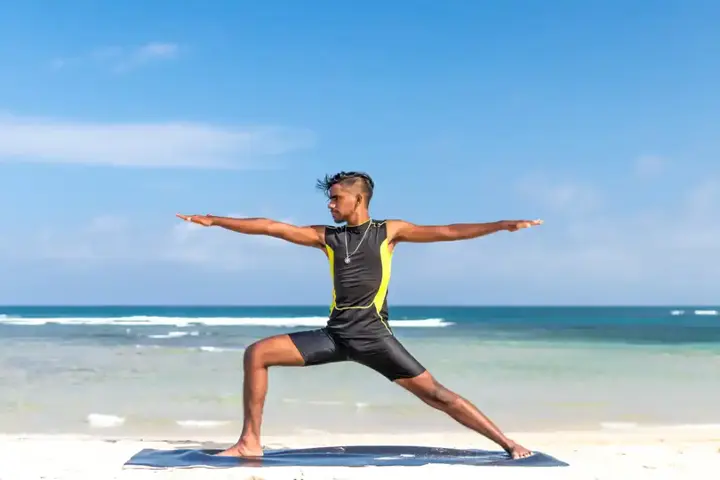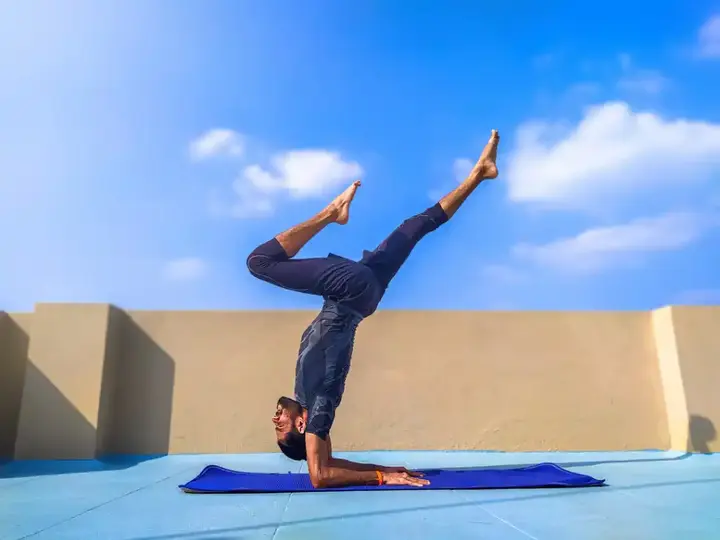Yoga isn't just an exercise — it's a path to self-realization

Yoga, a comprehensive system of physical, mental, and spiritual practices, can serve as a powerful path to self-realization. Self-realization, or understanding one's essence and true purpose, is a central goal in many philosophical and spiritual traditions. Self-realization in yoga derives not only from physical exercises themselves, but from the comprehensive integration of various aspects of yoga practice. While physical exercise plays an important role, it is just one part of the multifaceted approach yoga offers to self-realization. In this article, we show how physical exercise can contribute, along with the broader picture of how self-realization can be made in yoga. Note that in the article we have preserved some terms in their original language with reference to them in Arabic.
Recommend
Show key points
- Yoga is a multifaceted system that integrates physical, mental, and spiritual practices to support the journey toward self-realization.
- Physical postures (asanas) enhance body awareness and discipline, creating a solid foundation for deeper self-exploration and spiritual growth.
- Breathing techniques (pranayama) regulate energy and calm the mind, preparing practitioners for meditation and deeper inner peace.
- ADVERTISEMENT
- Meditation fosters mindfulness, insight, and transcendence by stilling mental distractions and connecting individuals to their higher self.
- Ethical principles like Yama and Niyama help purify thoughts and actions, cultivating a harmonious internal environment for self-awareness.
- Through Jnana Yoga, individuals use study and discrimination to distinguish between the self and the transient, leading to profound inner truths.
- Devotion (Bhakti Yoga) and selfless service (Karma Yoga) dissolve the ego and promote unity with others, further supporting the path to self-realization.
Physical exercises (asans):

In terms of mind-body communication:
Awareness: Practicing postural positions (asanat) enhances physical awareness, and helps individuals become more in tune with their physical condition, sensations and energies. This increased awareness lays the foundation for a deeper search for self and mental awareness.
Discipline: The regular practice of asanat instills discipline, patience and perseverance, qualities necessary for the inner journey of self-realization.
In terms of energy flow and balance:
Life Energy (Prana): Poses help balance the body's energy channels (club) and ensure the free flow of prana.
Balance and Harmony: Poses help balance the body's energy systems, removing blockages and promoting the free flow of prana (life energy). A balanced energy system also supports mental clarity, emotional stability, and spiritual insight.
Health and vitality: By improving physical health and vitality, postures create a strong and stable foundation for pursuing deeper spiritual practices such as pranayama (breath control) and meditation.
Breathing control (pranayama):

In terms of control and concentration:
Breathing awareness: Pranayama, the practice of breathing control, promotes breathing awareness, connects mind and body; it teaches breathing control, which leads to more control over the mind and emotions, and prepares practitioners for deep meditation.
Energy regulation: deep and regular breathing calms the nervous system. It increases calm and clarity, reduces stress, and promotes a state of inner peace, which helps meditation and self-discovery.
Meditation (Diana):

On the level of internal silence:
Mindfulness: Meditation involves focusing the mind and not paying attention to distractions. On the other hand, regular meditation practice develops awareness and the ability to remain present and fully engaged in the present moment.
Self-Searching: Through meditation, practitioners can engage in self-search, examining their thoughts, emotions, and behaviors to gain insight into their true nature.
On the level of transcendence:
Beyond the ego: Meditation helps to transcend the ego, to feel a separate self, and to promote a sense of union with all beings. This experience of union with nature is an essential aspect of self-realization.
Connecting with the higher self: Regular meditation can lead to experiences of higher states of consciousness, connecting the practitioner to the higher self and global consciousness.
Ethical principles (Yama and Sleepa):

On the ethical basis:
Yama are the ethical guidelines for interacting with the world, such as nonviolence (Ahimsa) and honesty (Satya). Adherence to these principles purifies one's actions and relationships, and fosters a clear conscience and a peaceful mind.
Nyama: It is compliance with rules, such as satisfaction (Santosha) and self-discipline (tapas). The practice of niama supports inner growth and self-discipline, which is essential for the journey inward.
In terms of self-purification:
Cleansing the mind and body: Yama and Niama help cleanse the mind and body of impurities, creating a harmonious internal environment that helps self-discovery and realization.
Wisdom and Knowledge (Jinana Yoga):

In terms of self-knowledge:
Study and meditation: The path of knowledge (jnana yoga) involves studying spiritual texts, contemplating their meanings, and applying their teachings in one's life. This intellectual and empirical understanding helps to reveal deeper truths about the self.
Discrimination: Jinana Yoga teaches the practice of discrimination (vivica), to distinguish between real and unreal, eternal and transient. This distinction is critical to the realization of one's true self beyond the ego and physical existence.
Sincerity and Surrender (Bhakti Yoga):

In terms of love and sincerity:
Heart-Centered Practice: Bhakti Yoga, the path of fidelity, involves cultivating love and devotion toward higher power. This practice opens the heart, dissolves the ego, and fosters a deep connection with God.
Surrender: Surrendering to a higher power or to the universe helps transcend personal desires and attachments, leading to a sense of peace and unity with all existence.
Service and Work (Karma Yoga):

At the level of giving work:
Serving Others: Karma Yoga, the selfless path of action, emphasizes doing business without being tied to results. This practice helps to dissolve the ego and promote loneliness with others.
Purification: Engaging in selfless service purifies the heart and mind, and creates fertile ground for self-realization.
The end:

Yoga, in its holistic approach, provides diverse tools and practices that collectively lead to self-realization. While physical exercise (asans) are crucial, they are most effective when combined with breathing control, meditation, moral life, knowledge, dedication, and giving service. A holistic yoga approach ensures that practitioners develop physically, mentally, emotionally, and spiritually, leading to the realization of their true self, transcending the ego, achieving inner peace, and experiencing deep connection with self and the universe. This journey of self-discovery and transformation is the essence of self-realization, and the ultimate goal of yoga.








